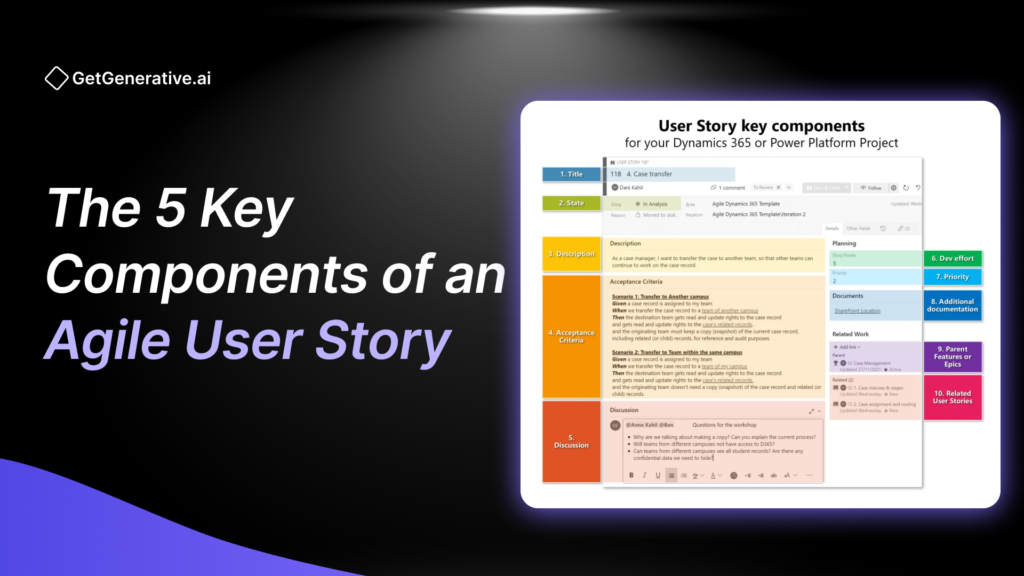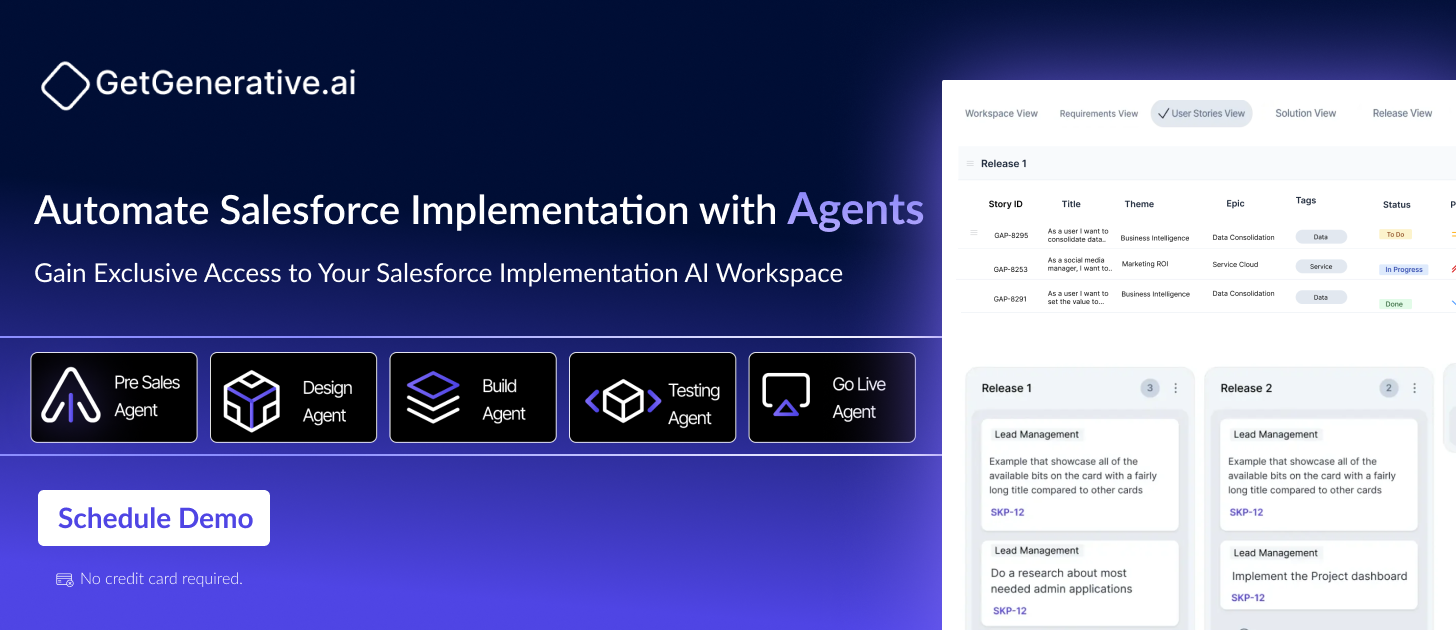The 5 Key Components of an Agile User Story
Agile user stories are the foundation of effective Agile project management. These brief, user-focused descriptions enable teams to synchronize their efforts with user requirements and organizational objectives. But what transforms a basic user story into an effective one? The secret lies in five key components that ensure clarity, collaboration, and value delivery.
Let’s break these components down step by step to understand their significance and how to implement them effectively.
What is an Agile User Story?
An Agile user story is a short, straightforward description of a desired feature or task, articulated from the perspective of the user. This narrative provides context and purpose for the development team, outlining who the user is, what they want, and why they need it. Unlike lengthy technical documents, user stories focus on simplicity and adaptability.
For example:
“As a customer, I want to monitor my order’s progress to organize my delivery schedule.”
This structure emphasizes the user’s priorities while fostering productive team discussions.
Why Are User Stories Important in Agile?
- Shifting the focus from features to user value.
- Encouraging active communication and shared understanding.
- Streamlining prioritization and decision-making.
Also Read – How to Write User Stories in Jira
5 Key Components of an Agile User Story
1. User Role: Who Needs This?
Knowing the “who” ensures that the development team designs with empathy, focusing on the user’s perspective.
For example:
- “As a new subscriber…”
- “As a marketing manager…”
Defining the role helps the team visualize the user’s context, preferences, and challenges. A well-identified user role also allows for better alignment with the broader product vision.
2. Achievable Action: What Do They Want?
The action represents what the user aims to achieve. This is the core of the user story and should be described clearly and concisely.
For example:
- “I want to receive notifications about discounts.”
- “I want to save items to my wishlist.”
The goal here is to outline the “what” without prescribing the “how.” Avoid jumping into solutions, as it limits creativity and innovation during the development process. Keeping the action broad ensures the team explores various implementation options that may deliver better value.
3. Desired Value: Why Does This Matter?
The value statement answers why the story is important. It provides a clear rationale for the work, ensuring the story remains consistent with user expectations and business goals. Including the purpose not only enhances clarity but also supports effective task prioritization.
For example:
- “So that I can make informed purchase decisions.”
- “So that I can stay updated on promotions.”
This component gives the development team a clear understanding of the impact their work will have, motivating them to deliver meaningful solutions.
4. Acceptance Criteria: How Do We Know It’s Done?
Acceptance criteria define what success looks like. These are well-defined, quantifiable benchmarks that confirm whether the story is completed to satisfaction.
For instance:
- The user should be able to subscribe to notifications using their email address.
- A confirmation message is displayed after sign-up.
- The user receives an email confirming their subscription.
These benchmarks function as a guideline, guaranteeing both the quality of the output and its alignment with user requirements. They also serve as a reference for testers and stakeholders during validation.
5. Simplicity: Keep It Small and Achievable
User stories must be concise enough to finish within a single sprint. Decomposing complex tasks into simpler components allows for faster execution and improved focus.
For example:
Instead of a large story like, “Build an entire checkout system,” break it into smaller stories such as:
- “As a user, I want to add items to my cart.”
- “As a user, I want to apply discount codes.”
Smaller stories not only simplify development but also highlight low-priority elements that can be deferred or removed.
Also Read – How to do a User Story Mapping in Jira?
Benefits of Writing Clear Agile User Stories
Enhanced Team Collaboration
Well-constructed and clear user stories provide a unified framework for the team. They ensure developers, testers, and stakeholders share the same understanding and work cohesively. This collaborative clarity reduces miscommunication and fosters a sense of shared ownership.
Improved Development Efficiency
When user stories are concise and actionable, the team spends less time deciphering requirements and more time building solutions. They provide a roadmap that guides developers in delivering functionality quickly while maintaining quality.
Prioritization Made Easy
User stories with well-defined value statements help stakeholders prioritize tasks based on their impact. Stories that deliver the highest value can be addressed first, ensuring efficient use of time and resources.
Common Pitfalls to Avoid in User Story Creation
Vague or Ambiguous Stories
A frequent pitfall is crafting unclear user stories that lead to differing interpretations, creating confusion and inefficiencies. For example, a story like “Improve the dashboard” is too broad. Instead, specify the improvement, such as “Add real-time sales metrics to the dashboard.”
Ignoring the User’s Perspective
Stories that fail to focus on the user’s needs lose their purpose. Always frame the story from the user’s point of view rather than a technical or process-oriented one.
Overcomplicating Acceptance Criteria
While acceptance criteria are essential, adding excessive details can make them confusing and counterproductive. Keep them concise and measurable.
Creating Stories That Are Too Large
Large, complex stories are difficult to complete within a sprint. Divide them into smaller, more practical segments to prevent delays and maintain consistent progress.
Also Read – 12 Key Benefits of Using the Agile Methodology
How to Refine and Improve Agile User Stories
Conduct Story Grooming Sessions
Story grooming sessions are collaborative meetings where the team refines and updates user stories. These sessions offer a chance to refine information, resolve uncertainties, and ensure stories are feasible.
Leverage Feedback for Ongoing Enhancement
Feedback from stakeholders and team members is crucial for refining and improving user stories continuously. It helps identify gaps, refine the format, and make user stories more effective with each iteration.
Incorporate Real-World Scenarios
Grounding stories in real-world scenarios makes them more relatable and actionable. Use actual user pain points and goals as the basis for crafting stories.
Practical Example of a Strong Agile User Story
Imagine an online bookstore aiming to optimize its checkout process. Here’s how a well-crafted Agile user story could be framed:
- User Role: As a returning customer…
- Achievable Action: I want to save my payment information securely…
- Desired Value: So that I can complete my purchases faster.
- Acceptance Criteria:
- The system allows users to securely store payment information.
- Users can opt to save payment details during checkout.
- The system complies with PCI-DSS standards.
This story is clear, actionable, and focused on delivering value to the user while ensuring compliance with security standards.
Conclusion
Mastering the art of writing Agile user stories is essential for driving successful project outcomes. By focusing on the five key components—user role, achievable action, desired value, acceptance criteria, and simplicity—you ensure that your stories are clear, actionable, and user-centered.
These elements not only streamline development but also enhance collaboration, prioritize value delivery, and foster adaptability in your Agile process.
To learn more, visit GetGenerative.ai.




